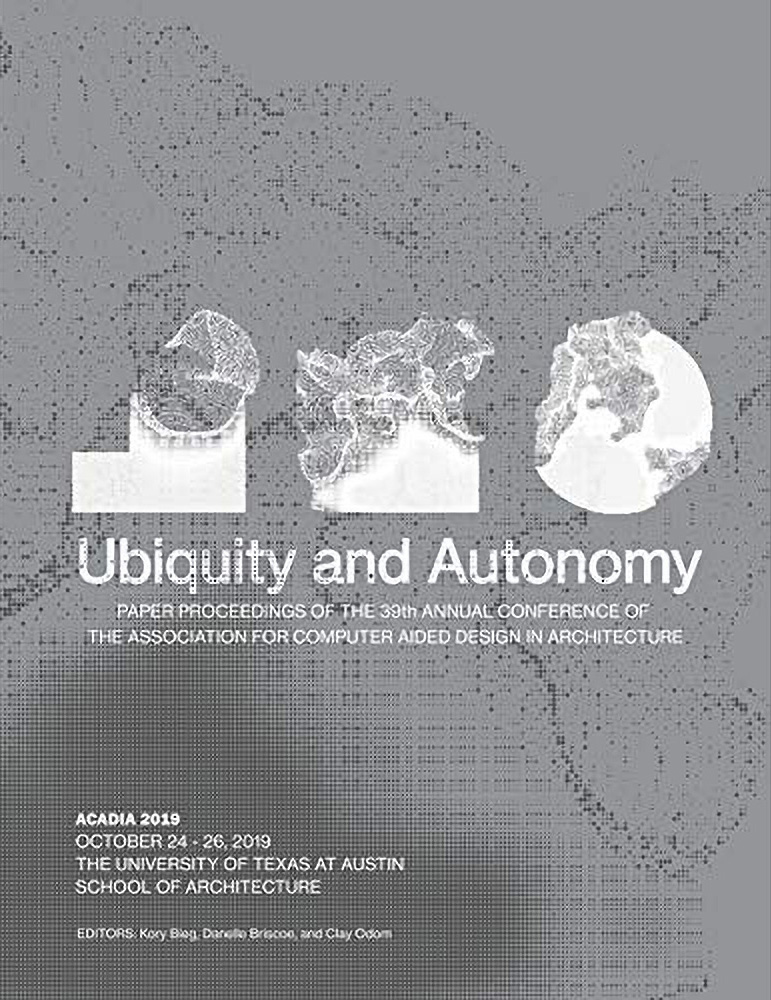The Oxymoron of “Jectivity”:
A Design Process for Unveiling the Unexpected Manifestations of the Architectural Project’s Reality
ACADIA 2019, pp. 320-329.
Go to Article︎︎︎
A Design Process for Unveiling the Unexpected Manifestations of the Architectural Project’s Reality
Go to Article︎︎︎
This paper discusses a design methodology that seeks to unveil the nature of architectural projects (here abbreviated AP) as the basis for spatial production. This method is embedded within a broader theory of designing that suggests an autonomy of the project as an independent entity detached from the architect. Therefore, the architect's role is to discover the AP. This approach appears as a counteraction to the relational models in designing where the architect constructs the project in limited and subjective ways usually driven by the alienation of external. The methodology presented here also rejects any possibility to reveal the AP in its fullness as a unique and absolute truth. The inherent reality of any project is specific and unique in itself. This means each AP is ontologically complete and different from any other. Because designing is the encounter between the AP and the architect, jectivity is a form of cognition that is neither objective nor subjective. It finds the potential of novel spatial configurations in what we call the "space of abundance," which appears beyond the architect's limited perceptions of the determinate AP. This design method aims to unfold some of the initially ungraspable multiple manifestations. Two particular projects explore jectivity as a methodology that seeks the AP's unknown and turns the procedures that lead to it into new knowledge gained for the architect. The two projects illustrate some of the possible uses of computational and digital technologies for both asking and materializing (cognize and notate) its inward architectural realities.

